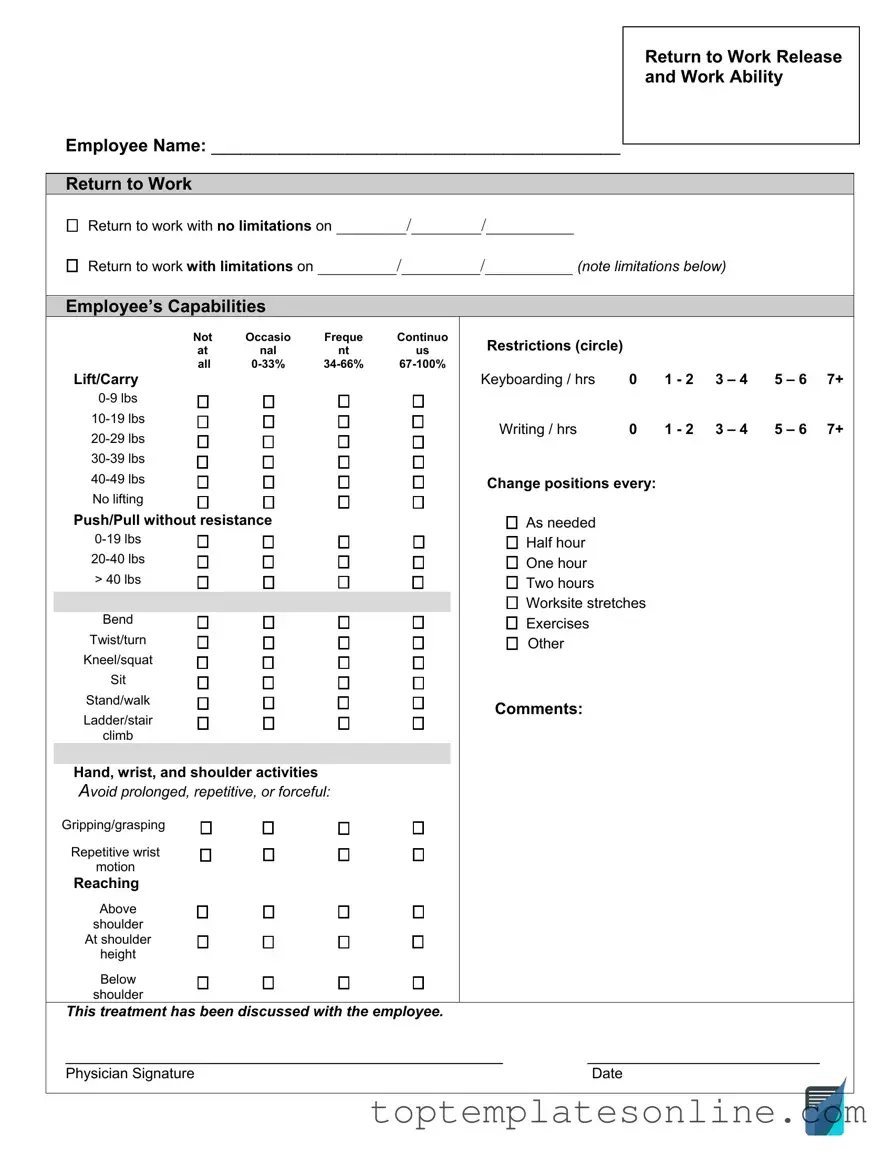The Work Release form is an essential document that plays a significant role in various employment and legal situations. Designed to provide permission for individuals to engage in work-related activities outside of their typical obligations, this form is often used in contexts such as probation, parole, or rehabilitation programs. By outlining the specific terms and conditions under which a person may work, the form helps ensure compliance with legal requirements while promoting personal responsibility and accountability. It typically includes details such as the individual's name, the nature of the work, the hours of operation, and any necessary approvals from supervising authorities. Understanding the components of the Work Release form is crucial for both individuals seeking employment opportunities and the organizations that support them, as it helps facilitate a smoother transition into the workforce while adhering to legal guidelines.
